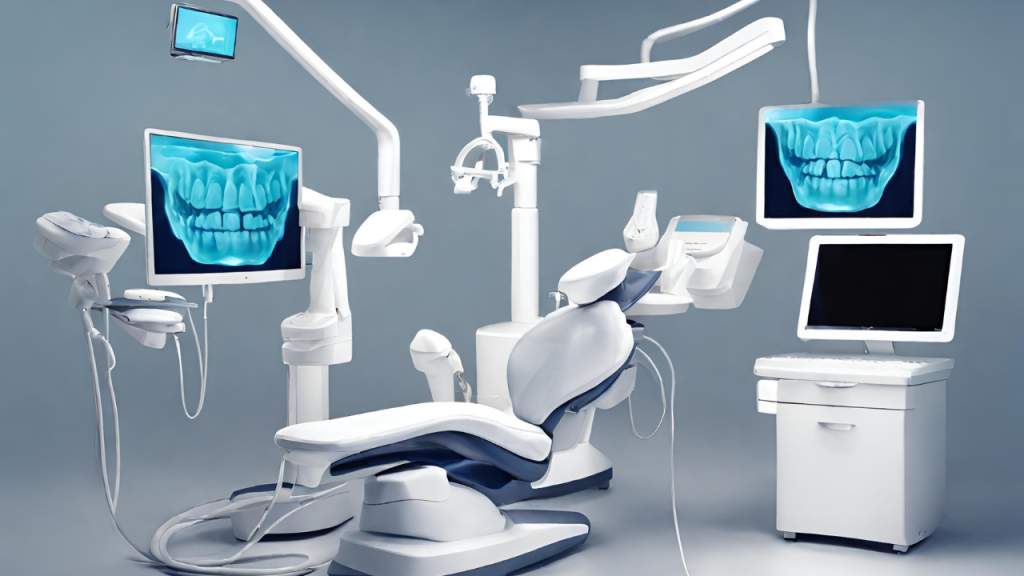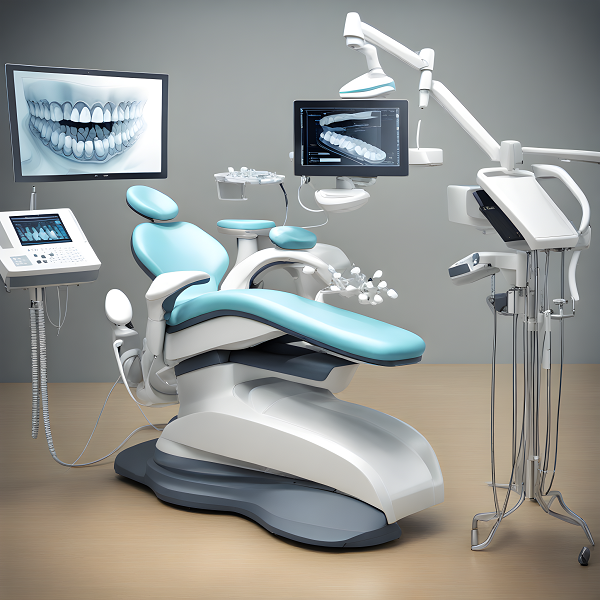Exploring 3 Of The Most Progressive Trends In Dental Healthcare
The dental industry has witnessed remarkable advancements in recent years, revolutionizing the way oral health is approached and treated. With innovative technologies, evolving patient expectations, and a focus on preventive care, the global dental industry is undergoing a transformative phase. In this blog post, we will explore the emerging practices that are reshaping the Progressive Trends In Dental Healthcare and discuss their benefits and potential drawbacks for both dental professionals and patients.
The Rise of Digital Dentistry – Exploring One Of The Foremost Progressive Trends In Dental Healthcare
In recent years, the field of dentistry has witnessed a major transformation with the rise of digital dentistry. Powered by cutting-edge technology, this revolution has significantly enhanced and improved dental procedures, revolutionizing patient outcomes. From digital imaging to CAD/CAM systems and 3D printing, these advancements have opened up a new world of possibilities in oral health care.

- Digital Imaging: A Window Into the Invisible
Digital imaging has played a vital role in transforming the way dentists diagnose and treat dental conditions. Through the use of Cone Beam Computed Tomography (CBCT) scans, dentists gain precise 3D images of the patient’s oral structures, allowing for more accurate diagnoses and treatment plans. This technology is especially valuable in implant placement, root canal procedures, and orthodontic treatments, enhancing patient comfort and reducing treatment time.
- CAD/CAM Systems: Precision and Efficiency Unmatched
Computer-Aided Design and Computer-Aided Manufacturing (CAD/CAM) systems have revolutionized dental procedures, transforming the way dental restorations are made. These systems create digital models of a patient’s teeth, enabling the dentist to design custom-fit crowns, veneers, and bridges with unrivaled precision. With CAD/CAM systems, the entire process, from designing to milling the restoration, can be completed in a single appointment, eliminating the need for multiple visits and temporary restorations.
- 3D Printing: Personalized Solutions at Your Fingertips
Harnessing the power of 3D printing, digital dentistry has unlocked a new era of customized oral care solutions. Dental laboratories can now fabricate crowns, dentures, and other prosthetics with exceptional precision and detail. This technology improves both the efficiency of manufacturing and the fit of the final product, resulting in higher patient satisfaction and better overall oral health outcomes.
4. Benefits and Potential Drawbacks of Digital Dentistry
- Improved Patient Experience: Digital dentistry facilitates faster and more precise treatment, reducing chair time and discomfort for patients.
- Enhanced Accessibility: As digital dentistry becomes more affordable and accessible, it has the potential to reach remote areas where access to specialized dental professionals is limited, helping to address oral health disparities.
- Cost Considerations: While the initial investment in digital technology can be substantial, long-term cost savings can be achieved through increased efficiency, reduced material wastage, and fewer redo procedures.
- Learning Curve: Transitioning to digital dentistry requires training for dental professionals, presenting potential challenges in adapting to new software and workflows.
- The Future of Digital Dentistry: Towards New Frontiers
Highlight the potential future developments in digital dentistry, such as the incorporation of artificial intelligence for diagnosis, the use of virtual reality for patient education, and the integration of bioprinting for tissue regeneration. Emphasize the endless possibilities that lie ahead, marking digital dentistry as a field brimming with excitement and innovation.
Digital dentistry has ushered in an era of unparalleled precision, efficiency, and patient satisfaction. While there are considerations like cost and learning curves, the benefits far outweigh any potential drawbacks. Embrace this digital revolution which forms part of the Progressive Trends In Dental Healthcare as it promises a brighter, healthier smile for all.
B – Integration of Artificial Intelligence (AI) and Machine Learning As One Of The Other Progressive Trends In Dental Healthcare
Artificial Intelligence (AI) and Machine Learning (ML) have become buzzwords across many industries, revolutionizing the way businesses operate. However, their integration within the field of dentistry remains relatively unexplored. In this section of the blog post, we will delve into recent advancements and practical applications of AI and ML in dentistry and get expert insights on the future prospects of this phenomenon as part of Progressive Trends In Dental Healthcare.
Advancements in Diagnosing Oral Diseases:
Traditional methods of diagnosing oral diseases heavily rely on the expertise of dentists and their interpretation of patient symptoms, examination results, and medical history. AI and ML have the potential to augment and improve this process. By analyzing vast amounts of data from electronic health records, imaging studies, and studies on oral diseases, AI algorithms can enhance diagnostic accuracy.
Treatment Planning:
AI and ML algorithms can assist dentists in creating personalized treatment plans based on vast databases of patient data. By considering factors such as patient age, medical history, genetics, lifestyle, and environmental factors, AI systems can recommend appropriate treatment options. Additionally, AI can analyze large datasets to predict treatment outcomes, allowing dentists to make more informed decisions and improve patient care.
Image Analysis:
AI and ML algorithms are proving to be invaluable in image analysis within dentistry. These technologies can analyze radiographs, intraoral and extraoral images, and 3D scans. By identifying patterns and anomalies, AI can assist in the early detection of dental caries, periodontal diseases, and oral cancers. This not only improves diagnostic accuracy but also enables timely and targeted interventions, leading to better patient outcomes.
Patient Management:
AI and ML can streamline patient management processes by automating administrative tasks, enhancing communication, and improving patient engagement. Chatbots and virtual assistants can efficiently handle appointment scheduling, reminders, and answer patient queries. Patient analytics algorithms can predict disease progression, monitor treatment effectiveness, and recommend preventive measures for individual patients.
Benefits and Impact:
The integration of AI and ML in dentistry offers several potential benefits.
- Firstly, these technologies enable dentists to overcome human limitations, leading to increased accuracy and efficiency in diagnosis and treatment planning.
- Secondly, patient outcomes improve due to timely interventions and customized treatment plans.
- Thirdly, AI and ML enhance preventive dentistry by predicting disease progression and recommending appropriate interventions for high-risk individuals.
- Finally, healthcare costs may decrease through optimized resource allocation, reduced trial and error methods, and increased treatment success rates.
Drawbacks and Ethical Considerations:
While the benefits are profound, it is crucial to consider the potential drawbacks and ethical concerns associated with AI and ML in dentistry. Privacy and data security issues arise due to the sensitive nature of dental records. Patient trust and informed consent must be upheld to ensure responsible data handling. Additionally, AI algorithms are only as good as the data they are trained on, and biases could be inadvertently introduced.
Successful Implementations and Expert Insights:
Several AI and ML applications are already making an impact in dentistry. For example, DentScan, a dental imaging analysis system, uses AI algorithms to detect dental diseases accurately. Additionally, companies like Pearl, Karius, and Dentem use AI and ML to improve dental care processes.
Experts believe that the future holds immense potential for AI and ML in dentistry. These technologies will continue to advance and become more integrated into a dental practice, leading to improved diagnosis, treatment planning, and patient management. However, experts emphasize the requirement for ongoing research, collaboration, and ethical guidelines to ensure responsible and effective implementation.
Integrating AI and ML in dentistry has the potential to revolutionize dental practices. From diagnosing oral diseases to treatment planning, image analysis, and patient management, these technologies offer numerous benefits, including increased accuracy, efficiency, improved patient outcomes, and reduced healthcare costs. There is no doubt that the Progressive Trends In Dental Healthcare would at some point have to embrace AI and ML as well.
C – Focus on Preventive Dentistry: Ranking Amongst The Top Progressive Trends In Dental Healthcare
Maintaining good oral health is essential not only for a dazzling, confident smile but also for overall well-being. Traditional dentistry has primarily focused on treating oral diseases and problems after they occur. In this section, Progressive Trends In Dental Healthcare will be addressed from the viewpoint of the benefits and drawbacks of preventive dentistry.

The Benefits of Preventive Dentistry:
- Early Detection of Issues:
Regular check-ups play a crucial role in preventive dentistry. Dentists can identify oral health problems at their early stages when they are easier to treat. By detecting problems like cavities, gum disease, or oral cancer early on, preventive dentistry can significantly increase treatment success rates and reduce the need for complex and expensive interventions later.
- Reduced Incidence of Oral Diseases:
Practicing preventive dentistry, such as maintaining proper oral hygiene, regular teeth cleaning, and using fluoride treatments, can significantly reduce the risk of oral diseases such as tooth decay and gum disease. Studies have shown that individuals who follow preventive practices are less likely to suffer from these ailments, leading to fewer dental procedures and expenses in the long run.
- Cost-Effective in the Long Run:
While preventive dentistry involves regular check-ups and treatments, it ultimately saves you money. By proactively addressing dental issues through preventive measures, the need for costly dental procedures or surgeries is minimized. This makes preventive dentistry a wise investment in your long-term oral health.
- Aesthetic Benefits:
Beyond preventing dental problems, maintaining regular preventive care can also contribute to a brighter and more attractive smile. By adhering to preventive practices, you can enhance your overall appearance and boost your confidence.
Drawbacks and Concerns:
- Potential Overuse:
Some critics argue that preventive dentistry may be overutilized, leading to unnecessary interventions. While regular check-ups and preventive treatments are essential, it is essential to strike a balance. Dentists should prioritize individual patient needs and only recommend treatments that are truly beneficial based on their oral health status.
- Cost Implications:
The Progressive Trends In Dental Healthcare cannot be adequately addressed without concern regarding the cost involved with preventive dentistry. Regular check-ups, teeth cleaning, fluoride treatments, and dental sealants can accumulate expenses over time. However, it is crucial to consider prevention as a long-term investment. The cost of preventive care is generally lower than the cost of treating advanced oral diseases.
Real-Life Examples of Preventive Dentistry Being One Of The Progressive Trends In Dental Healthcare
To illustrate the importance of preventive dentistry, let’s consider two scenarios:
- Jane, a diligent advocate for preventive dentistry, visits her dentist every six months for routine check-ups and cleaning. During one of her visits, the dentist identifies early signs of gum disease and promptly treats it. Jane avoids the pain and cost of severe gum disease treatments and maintains a healthy, radiant smile.
- John, however, neglects his dental health, failing to seek preventive care. He eventually experiences tooth decay, requiring lengthy and expensive restorative treatments, such as fillings or crowns. John’s avoidable dental issues not only disrupt his oral health but also cause unnecessary financial stress and discomfort.
Preventive dentistry offers countless benefits for your oral health, aesthetics, and overall well-being. While concerns about overuse and costs exist, finding a balance between necessary preventive measures and individual needs is crucial. Make preventive dentistry a priority in your oral care routine, and reap the rewards of maintaining a healthy, beautiful smile for years to come.
Concluding Remarks On Progressive Trends In Dental Healthcare:
The dental industry is experiencing a period of transformative growth, driven by advancements in technology and changing patient expectations. Digital dentistry, AI integration, and a preventive healthcare model are revolutionizing how dental healthcare professionals deliver optimal care and enhance patient experiences. While these Progressive Trends In Dental Healthcare bring numerous benefits, they also present challenges such as financial investments and ethical considerations.
As the industry evolves, it is essential for dental professionals to stay updated with emerging trends and assess their impact on their practice and patients. By embracing these trends and adapting their approach, dentists can leverage them to provide efficient, precise, and patient-centered care, ultimately shaping the future of dental healthcare.
So, are you ready to embrace these trends and witness the remarkable transformation in the worldwide dental industry? The future of better oral health is within reach; it’s time to take the first step towards keeping abreast with emerging and Progressive Trends In Dental Healthcare.









